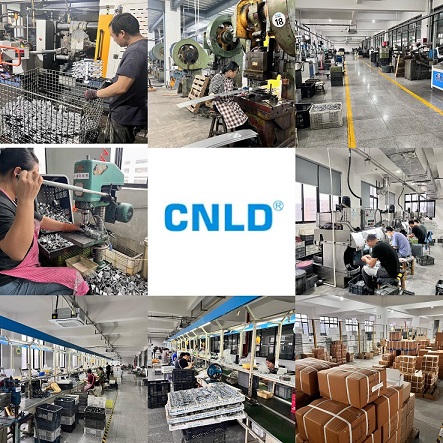1. Raw Material Preparation: Preparing and selecting high-quality metals such as stainless steel, zinc alloy etc at the first. These raw materials are usually in the form of bars, sheets, or wires, which are carefully inspected to ensure they meet the required quality and mechanical properties standards.
2. Secondly, casting or forging, some lock components may be produced through casting or forging processes. In casting, molten metal is poured into a mold cavity to form the desired shape. Forging, on the other hand, involves shaping the metal by applying compressive forces. For example, the lock body or certain heavy-duty parts might be cast or forged to achieve the necessary strength and durability. Here also show you some pictures about our workers are operating advanced machinery with great skill and concentration. They pour raw material into die-casting machine to meltdown and form the desired shape.
3. Thirdly is machining process, this is a crucial step. The raw or pre-formed components are machined using various tools and machines. For instance, the key way is precisely milled into the lock cylinder, and holes for pins and other mechanisms are drilled with high precision. Our workers use polishing machine and threading machine to doing precision cutting, drilling, milling, and turning operations are carried out to create the intricate details and accurate dimensions of the lock parts.
4. hen, the machined parts are subjected to surface treatment processes. This may include polishing to give a smooth and shiny finish, plating with materials like chrome or nickel to enhance corrosion resistance and appearance, or painting for decorative and protective purposes. For example, the outer casing of a lock might be chrome-plated to make it more attractive and durable in different environmental conditions.
5. Let’s go to step to assembly now, our skilled workers assemble the various components of the lock. The lock cylinder, pins, springs, latch, and other parts are carefully fitted together. Special attention is paid to the alignment and proper functioning of each part. For example, the pins are inserted into the lock cylinder in a specific order and adjusted to ensure smooth operation of the key.
6. After assembly, the assembled locks go through a series of strict quality inspection procedures. This includes checking the mechanical operation of the lock, ensuring the key turns smoothly and the latch engages and disengages properly. Locksmiths or quality control technicians may also test the lock’s resistance to picking and other forms of unauthorized access. Only the locks that pass all the quality tests are packaged and prepared for shipment.
7. At the last, the approved locks are packaged in suitable boxes or containers, with necessary accessories like keys. Then shipped locks to distributors, retailers, or directly to customers, ready to be installed and used for security purposes.
Our team are always holding quality first, service first, and serves customers create value concept, provide customers with multiple solutions to meet the different needs of customers, at the same time strive to improve internal competitiveness, and provide customers with products on time, quality and quantity.
In the end, we will achieve a win-win situation for our customers and us.
Post time: Nov-21-2024

